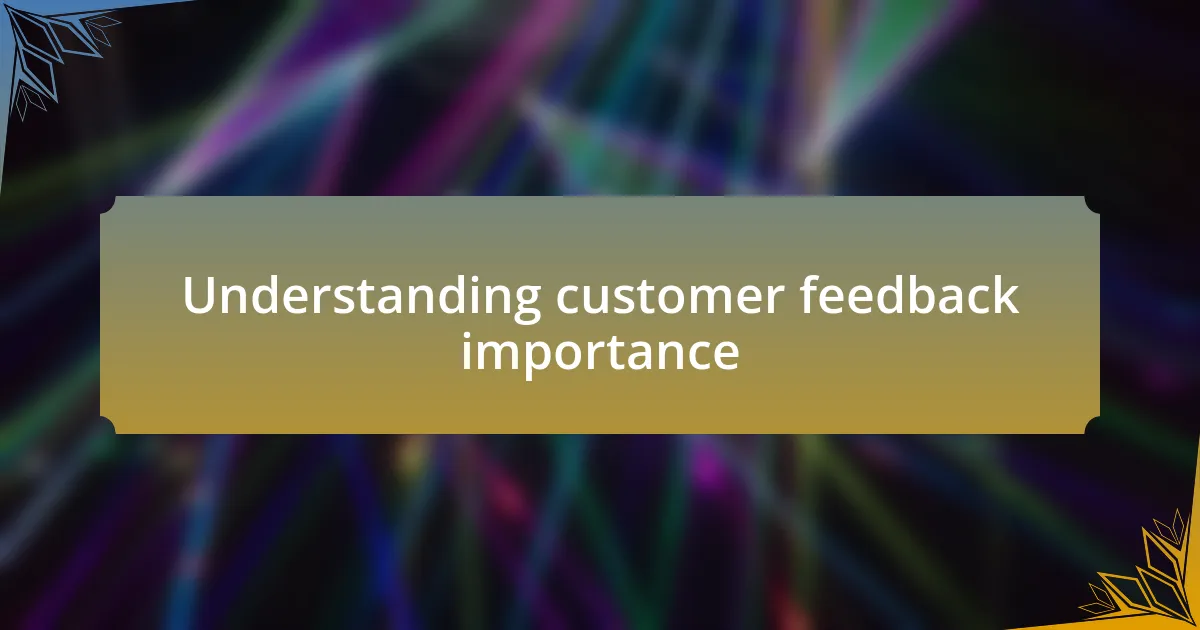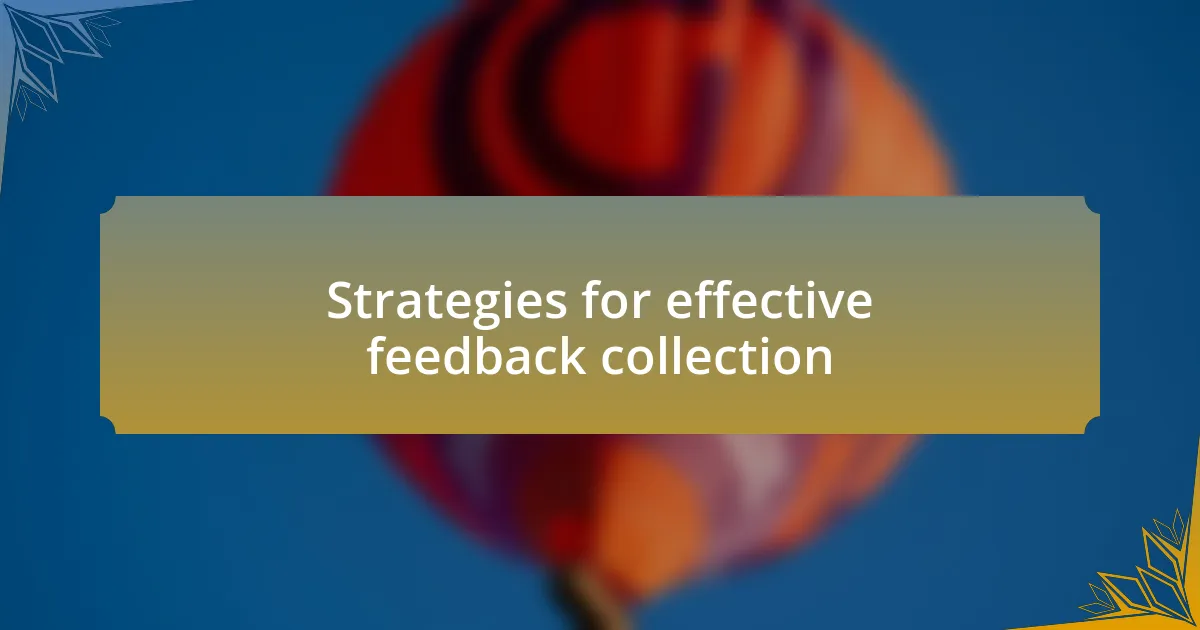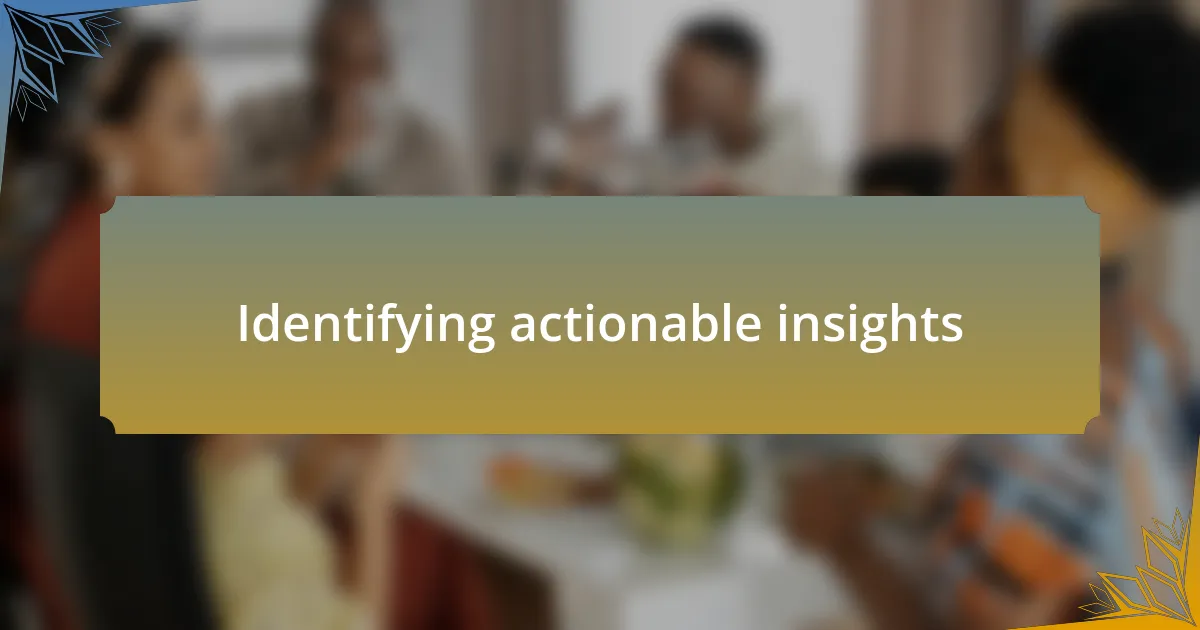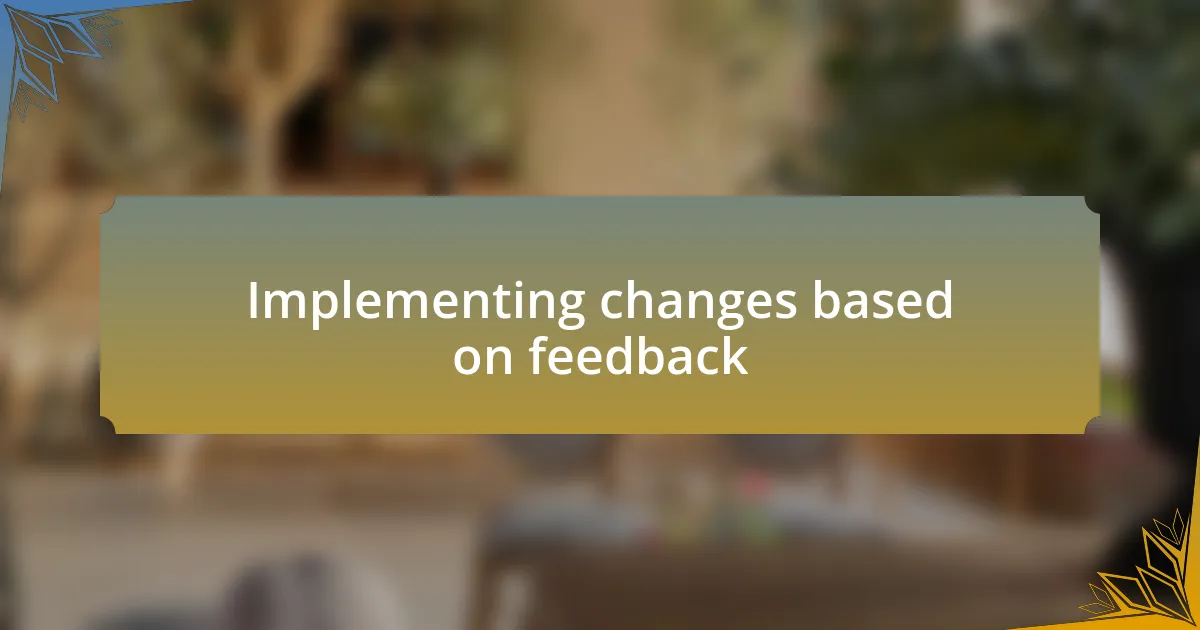Key takeaways:
- Customer feedback is essential for building trust and improving the overall user experience, as it reflects customers’ feelings and narratives.
- Effective feedback collection involves creating an inviting environment, utilizing multiple channels, and timing requests appropriately.
- Analyzing feedback data can reveal actionable insights, such as identifying recurring themes or understanding customer sentiments, which can guide strategic decisions.
- Implementing feedback changes cultivates empathy and improves customer satisfaction, demonstrating that listening and responding to customers can foster loyalty.

Understanding customer feedback importance
Understanding the importance of customer feedback is like having a direct line to your audience’s thoughts and feelings. I remember a time when we received a straightforward suggestion about our website’s navigation. Though it seemed minor, implementing it transformed the overall user experience, leading to a notable increase in customer satisfaction. Isn’t it fascinating how a little piece of feedback can lead to significant changes?
When we pay attention to what customers say, we demonstrate that we value their opinions. In my experience, this connection builds trust and loyalty. Have you ever felt like your voice was heard by a brand? That sense of recognition can turn a casual customer into a passionate advocate.
Feedback isn’t just data; it’s a narrative filled with emotions and experiences. Each comment reveals a unique perspective. I once found a heartfelt message from a customer who shared how our service helped her through a challenging time. That insight reminded me that behind every feedback, there’s a story waiting to be acknowledged and acted upon to create a more fulfilling customer journey.

Strategies for effective feedback collection
Collecting feedback effectively starts with creating an inviting environment for your customers. I’ve learned that a simple survey link sent via email after a purchase can yield remarkable insights. One time, I reached out to a small group of customers, offering them an exclusive discount for sharing their thoughts. Not only did I gain valuable information, but it also made them feel appreciated and more connected to our brand. Have you ever felt more valued just for expressing your opinion?
Incorporating multiple channels for feedback collection is another strategy I’ve found effective. While online surveys are great, combining them with social media polls and face-to-face interactions can offer a comprehensive view of customer sentiments. I remember attending an event where I engaged with attendees directly, asking them what they thought about our latest features. The immediate feedback I received during those conversations was far more impactful than any online form could provide. What do you think works better: the anonymity of a form or the personal touch of direct conversation?
Lastly, timing is crucial in feedback collection. I’ve discovered that asking for feedback right after a key interaction, like a purchase or customer service call, captures the customer’s experience while it’s fresh. One time, I sent a short text survey immediately after a support call, and the responses were candid and insightful. Has it crossed your mind how engaging with customers at the right moment could unlock a treasure trove of information? By applying these strategies, you can foster an ongoing dialogue that leads to meaningful transformations in your customer experience.

Analyzing customer feedback data
Analyzing customer feedback data is an essential step toward actionable insights. When I first started diving into metrics, I was overwhelmed by the sheer volume of information. I remember sifting through hundreds of survey responses, and it felt like trying to find a needle in a haystack. But then I realized that clustering responses into categories—like service issues or product features—could illuminate patterns I hadn’t noticed before. Have you ever pinpointed a recurring theme that changed your perspective on a service?
One method I’ve adopted is leveraging sentiment analysis tools. These tools can dissect the emotional tone behind customer comments, and I found this approach eye-opening. For instance, I once analyzed feedback from a campaign launch and discovered that customers not only loved our product but were also passionate about our company’s mission. That moment of realization inspired me to double down on our messaging and align it even more closely with our audience’s values. Have you considered how understanding sentiment could reshape your strategy?
In my experience, visualizing data can make all the difference. Creating dashboards to track key performance indicators (KPIs) allowed me to see correlations between customer satisfaction and specific changes we implemented. The first time I did this, I was amazed to see a direct link between increasing engagement on social media and improved customer loyalty scores. It made me wonder: how often do we miss these connections simply because we’re looking at data in isolation?

Identifying actionable insights
Identifying actionable insights involves digging deeper into the trends revealed by customer feedback. I remember a particular instance when I was analyzing responses related to our website navigation. While I expected to see comments about design aesthetics, I was surprised to find numerous mentions of frustration with menu placement. This revelation propelled us to redesign the navigation system. Have you ever had a moment where a small detail made a significant difference?
Another key aspect I’ve discovered is the power of cross-referencing feedback with customer journey touchpoints. By mapping feedback to specific stages in the customer journey, I was able to identify a critical drop-off point in the onboarding process. It became clear that the resources we provided weren’t resonating with new users. This insight led us to revamp our onboarding materials, resulting in a noticeable uptick in retention rates. How often do we neglect the critical connections between feedback and the journey?
Sometimes, the most valuable insights come from simply talking to customers directly. I’ve found that hosting focus groups gives me a clearer picture than data alone can provide. I once facilitated a session where a customer candidly shared their pain points about our return policy. The visceral reactions from the group sparked an impromptu brainstorming session that led to an immediate policy adjustment, greatly enhancing customer satisfaction. Have you tried having direct conversations to uncover real challenges?

Turning insights into decisions
When it comes to turning insights into decisions, I vividly remember a situation where customer feedback revealed a significant disconnect between their expectations and our service delivery. After dissecting their comments, we found that many users wanted more personalized interactions. This realization pushed us to implement a tailored communication strategy, resulting in a dramatically improved customer experience. Have you ever noticed how personal touches can elevate satisfaction levels?
Another memorable experience involved our feedback analysis after a major product launch. While most responses praised the new features, there was a common theme—customers were overwhelmed by the available options. I took this feedback to heart, prompting us to create a simplified user guide to aid in navigation. The impact was profound, and it left me pondering: could simplifying complexity be the secret to delighting our customers?
In my journey of transforming insights into actionable decisions, I’ve learned the importance of prioritizing feedback that aligns with our strategic goals. When a group of customers expressed concerns about the speed of our service, I didn’t just listen; I mobilized the team to brainstorm solutions. After implementing several of their suggestions, the results were staggering. Isn’t it empowering to see how aligning customer desires with business objectives can drive success?

Implementing changes based on feedback
When it comes to implementing changes based on feedback, I recall a time when a customer mentioned feeling ignored after reaching out for support. Their words struck a chord with me, as I understood the emotional weight of being unheard. We prioritized establishing a more responsive customer service approach, which included training staff to acknowledge every inquiry swiftly. The change fostered a greater sense of connection, and it made me wonder: how often do we overlook the simple act of listening?
One of the most transformative experiences occurred when feedback showed a significant number of users struggled with our website’s navigation. Instead of just tweaking the design, I gathered a team to participate in a “navigation workshop.” Together, we walked through the customer journey, and it was eye-opening to see where the hurdles lay. This collaborative effort didn’t just lead to a revamped site; it sparked a culture of empathy within our team. Have you ever considered how re-evaluating your processes with customer insights can inspire innovation?
Interestingly, during our quarterly review, we noticed a wave of feedback suggesting that our follow-up process felt too automated. Recognizing the potential for disappointment, we sought to humanize our follow-ups. Implementing personalized messages made a world of difference. It was one of those moments when I realized that genuine interactions could turn a transactional relationship into a meaningful one. Isn’t it fascinating how small changes can have such a profound impact on customer loyalty?

Measuring the impact of changes
Evaluating the impact of changes is crucial to understanding their effectiveness. I remember the moment we rolled out a revamped customer support system. Initially, I was anxious about how our users would react. The first month after implementation, I eagerly monitored feedback. To my relief, the comments flowed in, reflecting not just satisfaction, but an increased engagement with our support team. It felt rewarding to see quantitative metrics align with qualitative insights—a true testament to the power of listening.
One key strategy I employed was setting up a follow-up survey specifically targeting those who experienced the changes. A quick, thoughtful questionnaire allowed us to capture immediate reactions. When I analyzed the results, I was thrilled to discover a 30% increase in positive responses regarding support interactions. It was a clear signal that our efforts were paying off. Have you ever thought about how direct feedback can refine your initiatives and drive continuous improvement?
In subsequent reviews, I focused on visualizing data trends over time. This approach painted a fuller picture of customer satisfaction before and after each major change. For instance, a dip in website engagement prior to our navigation overhaul highlighted the urgency for improvement. As we tracked progress, I found deep satisfaction in not just observing numbers, but in seeing real stories of customers regaining ease and joy in their interactions with us. It reminds me—what better metric is there than genuine happiness in user experience?